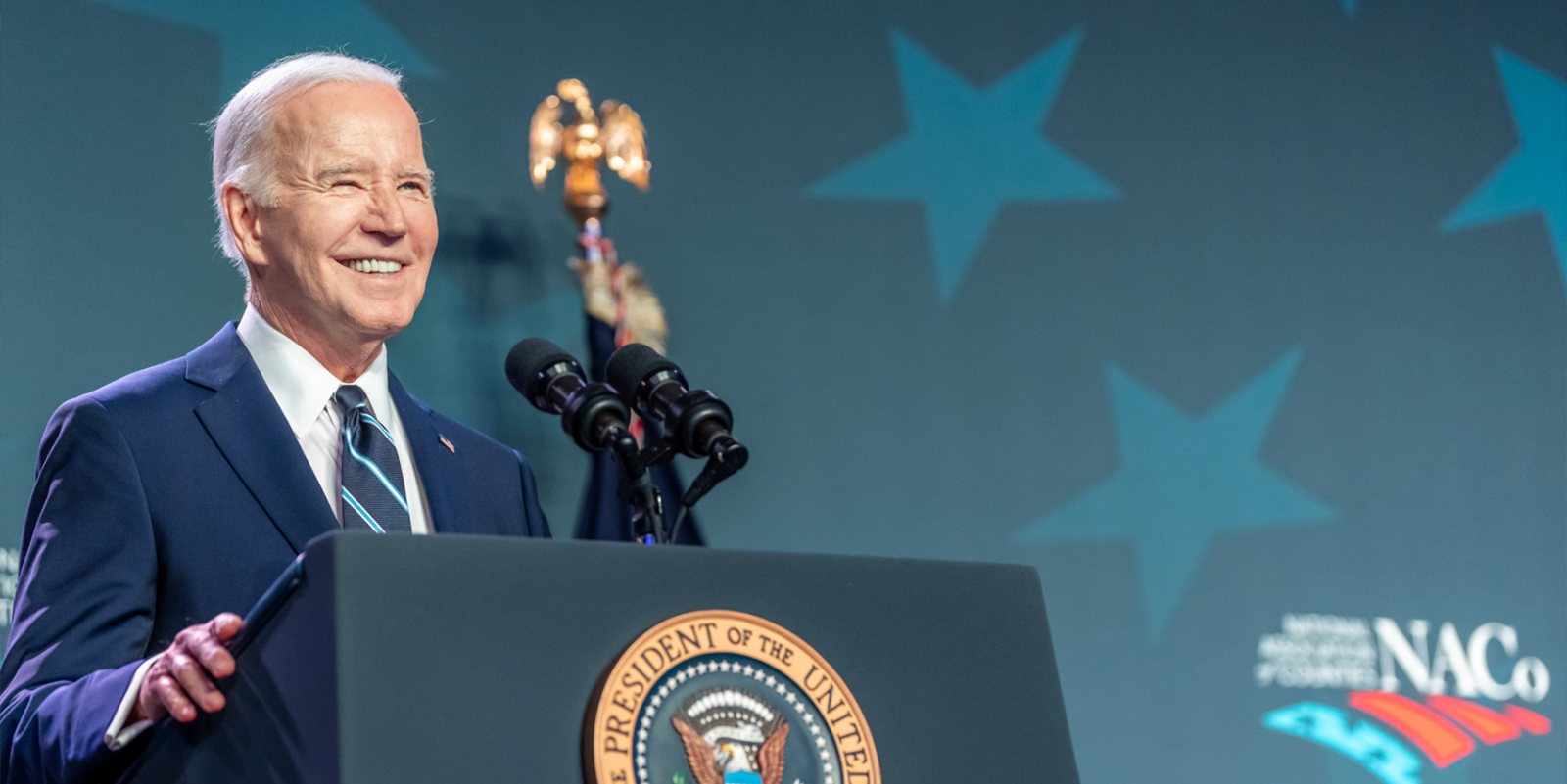Recently, the Biden-Harris Administration submitted the President’s Budget for Fiscal Year 2025. With upwards of 15 million jobs created and inflation down two-thirds since the President took office, the budget for 2025 looks to expand on the Administration’s Investing in America Agenda, which is aimed at making good-paying jobs more accessible, strengthening supply chains and national security, expanding America’s presence in manufacturing and innovation and addressing the climate issue.
The Budget seeks $11.4 billion in discretionary funding and $4 billion in mandatory funding to support Commerce Department missions that are vital in driving American competitiveness. The resources provided by the Budget would build on prior investments made by the Administration to fortify the domestic semiconductor industry, providing all Americans with high-speed internet, in addition to helping climate resilience through the CHIPS and Science Act, Bipartisan Infrastructure Law and Inflation Reduction Act.
“At the Commerce Department, President Biden has set us on a mission to make America more competitive, and his budget would enable us to meet that mission by investing in our workers, our communities, and our country to create jobs, grow workforce training opportunities, and catalyze innovation,” said U.S. Secretary of Commerce Gina Raimondo. “The Budget continues to build on President Biden’s Investing in America agenda and will empower the Commerce Department to expand economic opportunity for the American people, better protect our national security, and promote renewable energy and conservation efforts for years to come.”
The 2025 Budget for the Department of Commerce specifically looks to drive American competitiveness. Listed below are just some of the main benefits that the Budget will bring.
Inspires Technological Development and Innovation Throughout the Country
Included in the Budget is $4 billion in mandatory funds for the U.S. Economic Development Administration’s (EDA) Regional Technology and Innovation Hubs Program to build upon the $500 million investment from the Consolidated Appropriations Act in 2023. Also included in the budget is $43 million in discretionary funding for smaller grants, focused on enabling tech and innovation growth in underrepresented regions. The funding would aid the EDA in creating regional technology hubs to produce great geographic diversity in technological innovation, as well as creating jobs in regions that are the most in need of them.
Promotes Economic Development and Creates Good-Paying Jobs
The Budget gives the EDA $437 million to help communities across the country drive innovation, competitiveness and economic development. As part of the investment, $41 million will be used to continue the Recompete Pilot Program, a new program established under the Biden-Harris Administration, aimed at providing flexible, place-based funding to the most economically distressed areas, hoping to lower prime-age employment gaps. $41 million was also proposed to go towards the Good Jobs Challenge to high-quality, local workforce systems to expand job opportunities. Additionally, $5 million would be provided in grants, focused on strengthening the economic development of tribal governments and indigenous communities.
Encourages Leadership and Responsible Usage of Artificial Intelligence (AI)

The Budget invests $65 million to safeguard and promote AI, which includes protecting the American people from the risks that the future of this technology can hold. The funding would help implement the main points of the Administration’s Executive Order 14110 “Safe, Secure, and Trustworthy Development and Use of Artificial Intelligence.” The U.S. AI Safety Institute would be given $50 million to continue creating guidelines, test environments, benchmarks and other practices to effectively evaluate the risks that AI poses. Some of the work that the Institute will do includes authenticating content made by humans, watermarking AI-generated content and many other precautions to ensure the safe and practical use of AI in the future. $8.8 million was also given to the Bureau of Industry and Security (BIS) and $3 million to the National Telecommunications and Information Administration (NTIA) to work on AI.
Protects U.S. Technologies and Capital
The BIS is provided $223 million through the Budget. With both China and Russia in controversial situations, the money would enable the BIS to expand export enforcement both domestically and overseas and evaluate the effectiveness of export controls among other things. The Budget also provides $5 million for the International Trade Administration (ITA) to implement new requirements under the Executive Order 14105, “Addressing United States Investments in Certain National Security Technologies and Products in Countries of Concern”, granting the proper resources to provide the sectoral and commercial expertise to guarantee that the U.S. Government can understand and act upon information retrieved from covered transactions with minimal risks of disrupting U.S. investment.
Supports Minority-Owned Businesses to Decrease Racial Wealth Gaps
The Budget provides $10 million to increase the Minority Business Development Agency’s (MBDA) total to $80 million. The MBDA’s funding has risen by $32 million since the Administration took over, hoping to continue to boost the economic strength of underserved businesses through the expansion of the Business Center Program, funding the Rural Business Center Program and supporting initiatives that will enforce economic growth.
Encourages Offshore Wind Energy and Climate Resilience
$53 million is provided in the Budget to grow wind permitting activities at the National Oceanic and Atmospheric Administration (NOAA), a $31 million increase from 2023. The money would help support the NOAA as it looks to reach its goal of deploying 30 gigawatts of offshore energy by 2030 while simultaneously protecting biodiversity and encouraging sustainable ocean co-use.
Boosts Future of Weather Satellites

The Budget features $2.1 billion for NOAA’s weather satellite, a $432 million jump from the year prior. The investment would go towards maintaining the existing fleet of satellites, which are vital for extreme weather forecasts, as well as investing in the next generation of systems that would be able to generate more accurate forecasts and new environmental monitoring capabilities.
Shields High-Priority Natural Resources
The Budget provides $86 to aid NOAA’s National Marine Sanctuaries and Marine Protected Areas as a part of the Administration’s America the Beautiful Initiative, which looks to conserve at least 30 percent of U.S. lands and waters by 2030. The money would help promote conservation work and support the designation process for more sanctuaries. Also included in the Budget is $34 million to support Mitchell Act hatcheries in the Columbia River Basin. The Basin is home to fish such as wild salmon, steelhead and more native fish that the U.S. Government is working to protect.
Modernizes Research Facilities
The Budget also invests in the buildings that make top-of-the-line science possible, providing $312 million for maintenance, renovations and improvements at research campuses for the National Institute of Standards and Technology (NIST). These resources will allow NIST to increase several electricity, heating and cooling capabilities to allow its laboratories to continue their groundbreaking work in the scientific fields.
Upgrades Economic Data
The Budget provides $1.6 billion to the Census Bureau, a $93 million jump from 2023. The funding allows the Census Bureau to modernize its information technology, allowing it to collect and analyze data more effectively. The Budget also provides $138.5 million to the Bureau of Economic Analysis (BEA) to help economic statistics.











